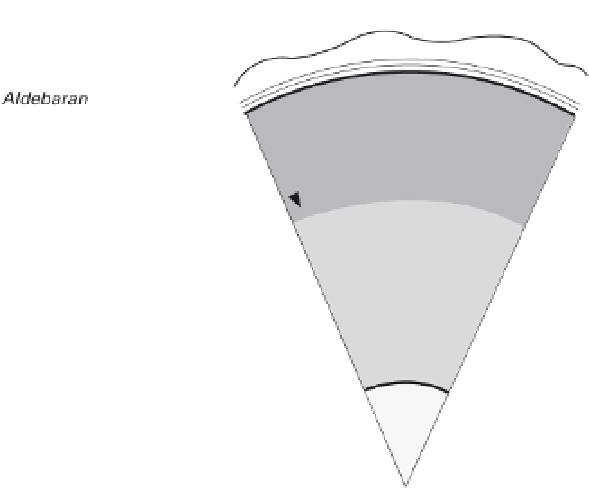Environmental Engineering Reference
In-Depth Information
2.1 (a) Hertzsprung-Russell diagram of visual magnitude
and spectral classes of stars. (b) A section through the Sun's
interior. Based on Kaler (1992).
which is the fusion of four protons to form a helium
nucleus (Phillips 1992):
accomplished almost instantaneously; the fusion of two
3
He atoms returns two free protons available for another
p-p reaction. This cycle provides the bulk of thermo-
nuclear energy in all stars with core temperatures of up to
about 17 MK; above that level the much less important
carbon-nitrogen cycle becomes dominant (Cox, Living-
ston, and Matthews 1991; Kaler 1992; Phillips 1992).
Approximately 9
:
2
10
37
thermonuclear reactions take
place every second (every one liberating 4
:
2
10
27
J),
and they consume 4.4 t of the Sun's core every second.
According to the Stefan-Boltzman law, the radiant flux
(F , the total energy radiated per unit of area) is propor-
tional to the fourth power of temperature,
1
H
þ
1
H
!
2
D
þ
positron
þ
neutrino
1
H
þ
2
D
!
3
He
þ
g rays
3
He
þ
3
He
!
4
He
þ
1
H
þ
1
H
The probability of the first step is extremely low, and
random collisions at a speed sufficient to overcome the
electrical barrier take place only because of the enormous
quantity of protons in the Sun's core. The second step is
































































































































































































































































































































































